-
 Bitcoin
Bitcoin $108,703.4836
0.45% -
 Ethereum
Ethereum $2,576.6839
1.58% -
 Tether USDt
Tether USDt $1.0001
0.00% -
 XRP
XRP $2.2924
-0.87% -
 BNB
BNB $660.2136
0.01% -
 Solana
Solana $151.4729
-0.29% -
 USDC
USDC $1.0000
0.00% -
 TRON
TRON $0.2866
0.04% -
 Dogecoin
Dogecoin $0.1698
0.82% -
 Cardano
Cardano $0.5831
0.13% -
 Hyperliquid
Hyperliquid $37.9814
-3.97% -
 Bitcoin Cash
Bitcoin Cash $503.9489
1.93% -
 Sui
Sui $2.8994
0.74% -
 Chainlink
Chainlink $13.5429
0.38% -
 UNUS SED LEO
UNUS SED LEO $9.0693
-0.19% -
 Stellar
Stellar $0.2524
0.15% -
 Avalanche
Avalanche $18.1959
1.02% -
 Shiba Inu
Shiba Inu $0.0...01180
1.48% -
 Toncoin
Toncoin $2.7601
-0.76% -
 Hedera
Hedera $0.1606
0.96% -
 Litecoin
Litecoin $86.6105
0.26% -
 Monero
Monero $315.7691
-0.56% -
 Polkadot
Polkadot $3.3911
0.25% -
 Dai
Dai $1.0001
0.03% -
 Ethena USDe
Ethena USDe $1.0002
0.02% -
 Bitget Token
Bitget Token $4.3076
-0.05% -
 Uniswap
Uniswap $7.5901
3.66% -
 Aave
Aave $288.0954
0.35% -
 Pepe
Pepe $0.0...01002
1.64% -
 Pi
Pi $0.4578
0.09%
How to check the transaction status when transferring money in Ethereum wallet?
Track your Ethereum transaction status via your wallet's interface, block explorers like Etherscan, or third-party trackers. Pending transactions await confirmation; confirmed transactions are included in a block; failed transactions indicate issues like insufficient funds or incorrect addresses.
Mar 24, 2025 at 08:56 pm
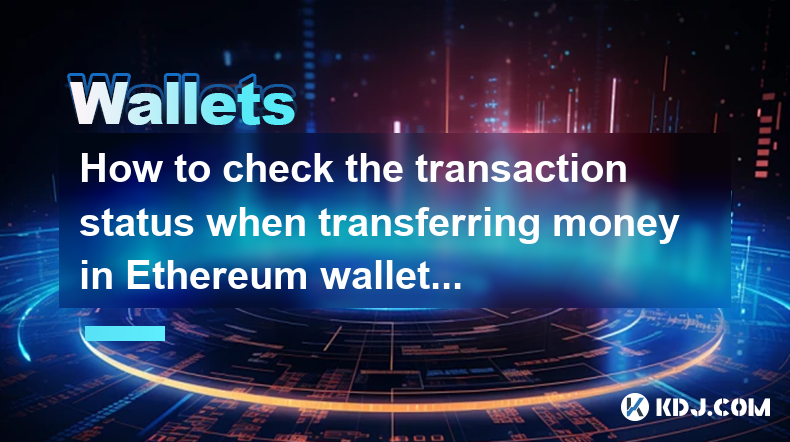
How to Check the Transaction Status When Transferring Money in an Ethereum Wallet?
Transferring Ether (ETH) or ERC-20 tokens on the Ethereum network involves several steps, and monitoring the transaction's progress is crucial. The speed and confirmation time vary significantly depending on network congestion and the gas fee you set. Understanding how to track your transaction is therefore essential to avoid unnecessary worry and ensure your funds arrive safely.
Understanding Ethereum Transactions
Unlike traditional banking systems, Ethereum transactions aren't instantly processed. They're included in blocks, which are added to the blockchain sequentially by miners. This process takes time, and the confirmation time depends heavily on the network's current activity. A higher gas fee generally leads to faster processing, as miners prioritize transactions with higher fees.
Methods to Check Transaction Status
There are several ways to track your Ethereum transaction status, each offering different levels of detail.
- Using Your Wallet's Interface: Most Ethereum wallets (like MetaMask, Trust Wallet, Ledger Live) provide built-in transaction trackers. After initiating a transfer, the wallet typically displays the transaction hash (a unique identifier). Clicking on this hash will show the transaction's status – pending, confirmed, or failed. The interface usually displays the transaction's progress in real-time.
- Using Block Explorers: Block explorers are websites that provide a detailed view of the Ethereum blockchain. Popular options include Etherscan, Blockscout, and others. You can enter your transaction hash into these explorers to see its current status, including the block it's been included in (if confirmed), the gas used, and the transaction fee. These explorers offer a comprehensive overview, often surpassing the detail provided by your wallet.
- Using Third-Party Transaction Trackers: Some third-party services specialize in tracking cryptocurrency transactions. These platforms aggregate data from multiple block explorers, offering a convenient way to monitor your transactions across different blockchains, not just Ethereum. However, always verify the legitimacy of any third-party service before using it.
Interpreting Transaction Status
Understanding the different transaction statuses is vital.
- Pending: This indicates your transaction is awaiting inclusion in a block. It's still unconfirmed, and the funds haven't yet reached the recipient. This phase's duration depends on network congestion and the gas price.
- Confirmed: Once your transaction is included in a block, it's considered confirmed. The number of confirmations required for security varies, but generally, six confirmations are considered sufficient. The more confirmations, the lower the probability of the transaction being reversed (though this is extremely rare on Ethereum).
- Failed: A failed transaction indicates that something went wrong. Reasons include insufficient funds, an incorrect recipient address, or a gas fee too low for the network's current conditions. The details of the failure are usually provided by your wallet or the block explorer.
Troubleshooting Transaction Issues
If your transaction remains pending for an extended period, several factors could be at play.
- Network Congestion: High network activity can significantly delay transaction confirmations. This is common during periods of high trading volume or when new projects launch on Ethereum.
- Insufficient Gas Fee: If your gas fee is too low, miners might not prioritize your transaction, leading to delays or failure. Increasing the gas fee often resolves this.
- Incorrect Recipient Address: Double-check the recipient address to ensure it's correct. Sending funds to the wrong address results in irreversible loss of funds.
- Wallet Issues: Problems with your wallet software can also interfere with transactions. Try restarting your wallet or updating it to the latest version.
Advanced Techniques
For more control over transaction speed, you can adjust the gas price manually. Higher gas prices increase the likelihood of faster confirmation, but they also increase transaction fees. Many wallets allow you to choose between "standard," "fast," and "fastest" gas options.
Specific Wallet Instructions
The exact steps for checking transaction status vary slightly depending on the wallet you use. Consult your wallet's documentation or support resources for detailed instructions specific to your chosen platform.
Common Questions and Answers
Q: My Ethereum transaction is pending for a long time. What should I do?
A: First, check the network congestion. If the network is congested, you might need to wait or increase your gas fee. If the network is not congested, check your wallet and the transaction details on a block explorer for any error messages.
Q: What does "gas" mean in an Ethereum transaction?
A: Gas is the computational cost required to execute a transaction on the Ethereum network. It's paid in ETH and determines the transaction fee.
Q: How many confirmations are needed for a secure Ethereum transaction?
A: While one confirmation is generally sufficient for many, six confirmations are typically considered secure. The higher the number of confirmations, the lower the risk of reversal.
Q: My Ethereum transaction failed. What are the possible reasons?
A: Possible reasons include insufficient funds, an incorrect recipient address, or an insufficient gas fee. Check your wallet and the transaction details on a block explorer for specific error messages.
Q: Can I cancel a pending Ethereum transaction?
A: Generally, you cannot cancel a pending Ethereum transaction. Once initiated, it enters the network. However, some wallets might offer a method to replace a transaction with a new one with a higher gas fee, effectively overriding the original.
Q: Where can I find my transaction hash?
A: Your transaction hash is usually displayed in your wallet after you initiate a transaction. It's a unique alphanumeric identifier that allows you to track the transaction on block explorers.
Disclaimer:info@kdj.com
The information provided is not trading advice. kdj.com does not assume any responsibility for any investments made based on the information provided in this article. Cryptocurrencies are highly volatile and it is highly recommended that you invest with caution after thorough research!
If you believe that the content used on this website infringes your copyright, please contact us immediately (info@kdj.com) and we will delete it promptly.
- Kraken, Rear Wing, and Memecoins: A Wild Ride to the Singapore Grand Prix!
- 2025-07-09 00:50:12
- Cronos Skyrockets: Decoding the Reasons Behind CRO's Crypto Surge
- 2025-07-09 01:30:12
- Ethereum's Wall Street Love & Ruvi AI's Audit Rally: A Crypto Cocktail
- 2025-07-09 00:55:12
- Crypto Coins with Growth Potential: Top Picks for Savvy Investors
- 2025-07-09 01:35:13
- Onyxcoin (XCN) vs. Solana (SOL): A Promising Bet in the Crypto Game?
- 2025-07-09 00:30:12
- Pi Network's Supply Surge: A Recipe for Price Problems?
- 2025-07-09 02:10:13
Related knowledge

What happens if I forget my Trezor passphrase
Jul 09,2025 at 03:15am
Understanding the Role of a Trezor PassphraseIf you use a Trezor hardware wallet, you may have set up a passphrase as an extra layer of security beyon...
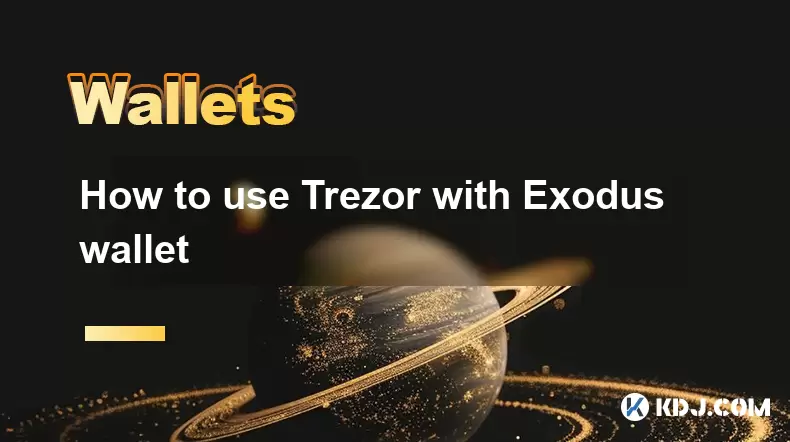
How to use Trezor with Exodus wallet
Jul 09,2025 at 12:49am
Connecting Trezor Hardware Wallet to Exodus Software WalletTo use Trezor with Exodus wallet, users need to connect the hardware wallet to the software...
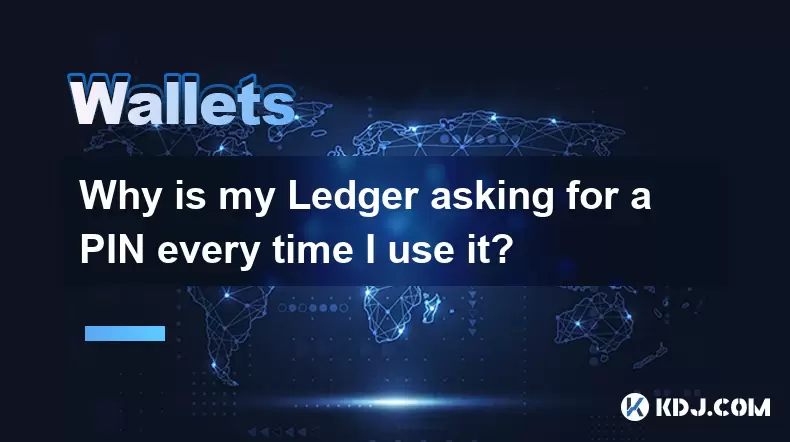
Why is my Ledger asking for a PIN every time I use it?
Jul 08,2025 at 11:21pm
Understanding the Purpose of the PIN on Your Ledger DeviceThe PIN (Personal Identification Number) is a crucial security feature built into every Ledg...
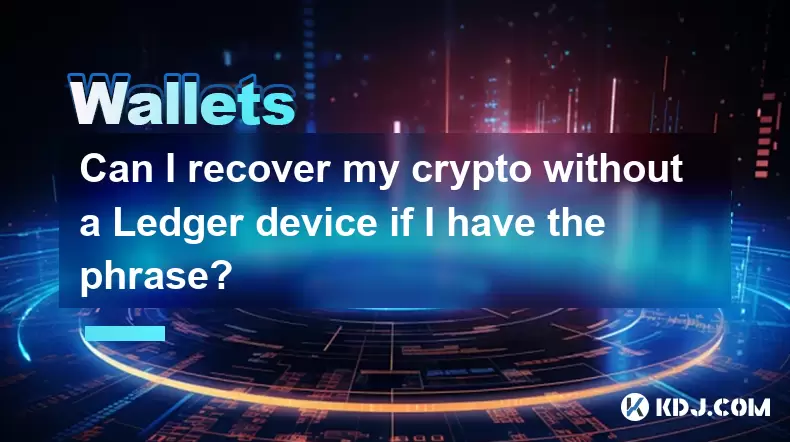
Can I recover my crypto without a Ledger device if I have the phrase?
Jul 09,2025 at 01:36am
Understanding the Role of a Recovery Phrase in Crypto SecurityIf you have your recovery phrase but no Ledger device, you might wonder whether it's pos...
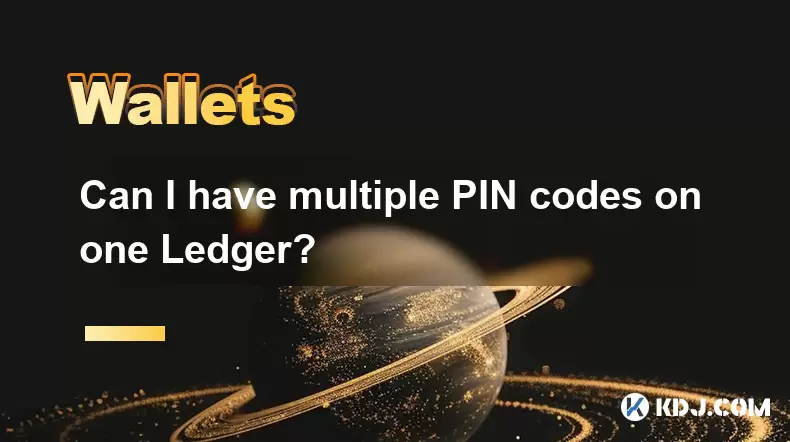
Can I have multiple PIN codes on one Ledger?
Jul 09,2025 at 12:35am
Understanding the Basics of Decentralized Exchanges (DEXs)A decentralized exchange, or DEX, is a type of cryptocurrency trading platform that operates...
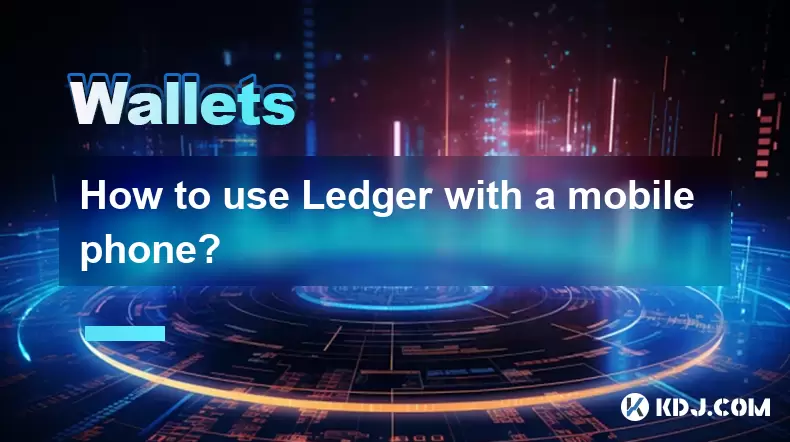
How to use Ledger with a mobile phone?
Jul 08,2025 at 10:49pm
Connecting Ledger Hardware Wallet to Mobile DevicesUsing a Ledger hardware wallet with a mobile phone provides a secure and convenient way to manage c...

What happens if I forget my Trezor passphrase
Jul 09,2025 at 03:15am
Understanding the Role of a Trezor PassphraseIf you use a Trezor hardware wallet, you may have set up a passphrase as an extra layer of security beyon...

How to use Trezor with Exodus wallet
Jul 09,2025 at 12:49am
Connecting Trezor Hardware Wallet to Exodus Software WalletTo use Trezor with Exodus wallet, users need to connect the hardware wallet to the software...

Why is my Ledger asking for a PIN every time I use it?
Jul 08,2025 at 11:21pm
Understanding the Purpose of the PIN on Your Ledger DeviceThe PIN (Personal Identification Number) is a crucial security feature built into every Ledg...

Can I recover my crypto without a Ledger device if I have the phrase?
Jul 09,2025 at 01:36am
Understanding the Role of a Recovery Phrase in Crypto SecurityIf you have your recovery phrase but no Ledger device, you might wonder whether it's pos...

Can I have multiple PIN codes on one Ledger?
Jul 09,2025 at 12:35am
Understanding the Basics of Decentralized Exchanges (DEXs)A decentralized exchange, or DEX, is a type of cryptocurrency trading platform that operates...

How to use Ledger with a mobile phone?
Jul 08,2025 at 10:49pm
Connecting Ledger Hardware Wallet to Mobile DevicesUsing a Ledger hardware wallet with a mobile phone provides a secure and convenient way to manage c...
See all articles

























































































